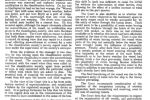The steel steamship Lowland Firth was launched from the South Shields yard of Hepples (1919) Limited (Yard No.658), on 6th January 1921. She measured 135.0′ x 23.3′ x 9.7′ and her tonnage was 351 gross tons, 139 net tons. She was powered by a two cylinder compound steam engine by Hepples delivering 65 registered hose power.
Built for Border Shipping Company of Glasgow and launched in 1921 the Lowland Firth was sold to the Cement Marketing Company, also of Glasgow in 1929 and renamed Snowcrete. She was later owned by another two Glasgow based companies before she was acquired by Challis Stern and Company Ltd., of Glasgow in 1947 and renamed Warren Grove.
At 5:30pm on 8th November 1948 the Warren Grove left Hartlepool bound for Buckie with a cargo of 249 tons of coal. Crucially this cargo did not fill the holds of the ship which were capable of holding up to 300 tons of coal. As she steamed out of Hartlepool harbour the weather was fine and the sea calm. However by around 8:00am the following morning, when the Warren Grove was off the Firth of Forth, the wind increased creating a strong swell from the south west. The ship began to roll as the waves pounded her port side. Around 8:30am the ship took a violent lurch to starboard. The crew later reported that she did not recover from this lurch and took on a permanent list to starboard estimated at fifteen degrees. The list resulted in the starboard side of the well deck being under water and the starboard side of the raised quarter deck being awash. Shortly after the water began to wash into the boiler room and then the engine room. By now the wind had increased to Force 8 and the ship was rolling uncontrollably. The captain ordered her course set towards land but it soon became obvious that the situation was hopeless. Distress rockets were fired and at 9:00pm the crew were ordered to put on their lifejackets. Finally at around 10pm the order was given to abandon ship.
The lifeboat was lowered but, as the crew attempted to board the lifeboat, another violent roll of the Warren Grove upset the lifeboat throwing the nine crewmen into the sea. Three of them managed to clamber back aboard the Warren Grove. The other men were seen clinging to the upturned lifeboat which drifted off into the darkness. This boat was later found drifting with three bodies aboard. The remaining three crewmen aboard the Warren Grove waited until the ship sank beneath them to board the remaining lifeboat and drift away safely. They were picked up safely the following morning by the steamship El Ciervo and taken to shore.
The subsequent enquiry was unable to absolutely determine the reason for the loss of the Warren Grove. There was evidence of the ship’s lack of stability on previous voyages and certainly an opportunity for cargo to shift. The coal cargo did not fill the hold nor did it appear that it was professionally trimmed when she was loaded but it could not be determined that the cargo had actually shifted. It was clear that for a variety of possible reasons water progressively entered the engine and boiler rooms which as some point caused the ship to founder in the heavy weather prevailing.
The wreck of the Warren Grove lies in the position 56° 41.617’N, 002° 07.540’W oriented 065/245 degrees lying in 67 metres with a least clearance of 8 metres. She was first surveyed in 1969 but not identified until 2019 when the ship’s bell with inscription ‘Lowland Firth’ was recovered by divers. The ship sits upright and in tact on a sandy seabed.
We would like to thank Lloyd’s Register Foundation – Heritage & Education Centre for allowing us to reproduce documents from their archive in this article.





































